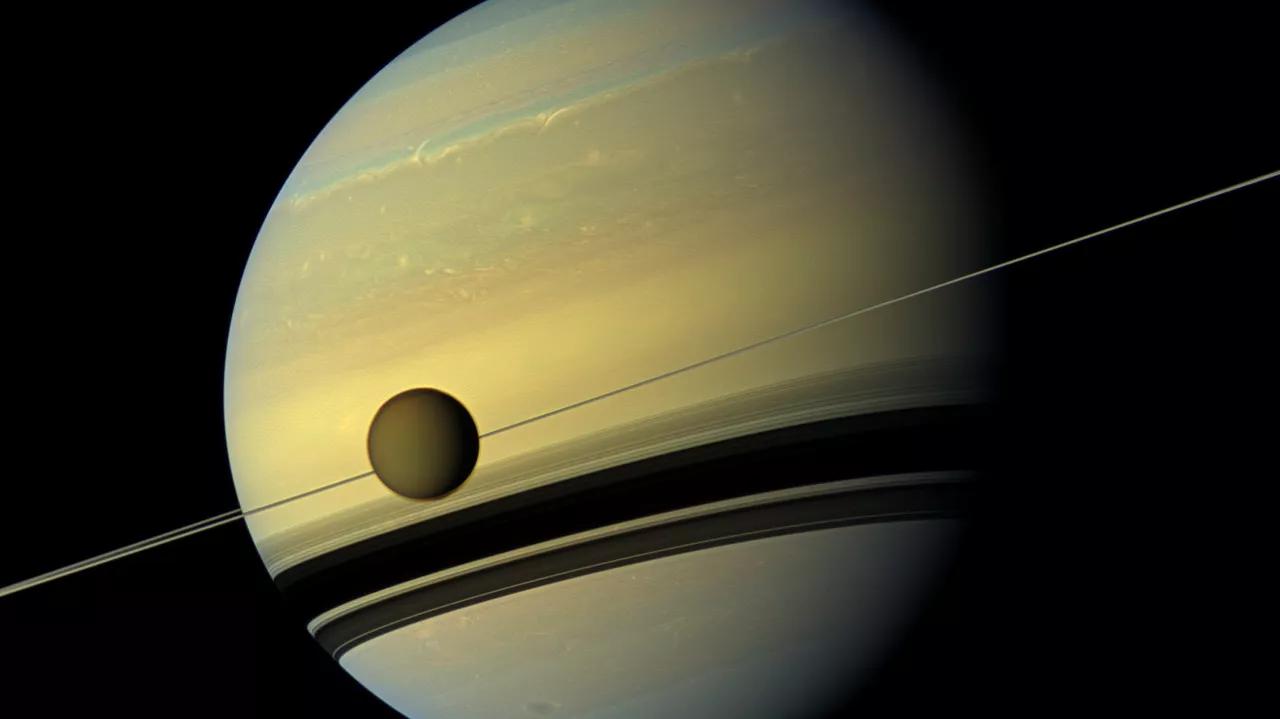Africa-Press – Liberia. Observations via the James Webb Space Telescope allowed scientists to discern the presence of clouds in Titan’s atmosphere, which seems to confirm the existing predictions about “seasonal weather patterns” there.
Having already supplied humanity with photos of several spectacular space phenomena, such as the “bone” structure of a remote galaxy or the “rings” circling Neptune, NASA’s James Webb Space Telescope has now procured a set of images of a planet located somewhat closer to Earth.
The images in question depict Titan, the largest moon orbiting planet Saturn and the only planetary body beside Earth in the Solar System that has seas and rivers (though in Titan’s case, the seas and rivers are comprised of hydrocarbons rather than water, as NASA points out).
Titan is also the only moon in the Solar System that possesses its own dense atmosphere, and the new images taken by James Webb’s Near-Infrared Camera gave scientists an opportunity to take a closer look at that atmosphere and study it.
The images allowed the James Webb team to discern the presence of two large clouds, which apparently validates the existing predictions about clouds forming in the moon’s “mid-northern hemisphere” when its surface gets warmed by the Sun during the “late summertime” there.
Having enlisted the cooperation of researchers from the Keck Observatory in Hawaii, who conducted follow-up observations of that atmospheric phenomenon, the team was able to confirm that the clouds remained in the same positions they were originally spotted, while apparently having changed shape.
One of the atmospheric experts the researchers contacted, Juan Lora from Yale University, did point out that, while there is no certainty that the follow-up observations detected the same clouds that were spotted during the original set of observations, they do serve as a “confirmation of seasonal weather patterns.”
The James Webb team now hopes to gain more information about the Titan and its atmosphere by using the space telescope’s instruments, and seeks to find clues that might help explain why that celestial body has such a dense atmosphere in the first place.
For More News And Analysis About Liberia Follow Africa-Press






